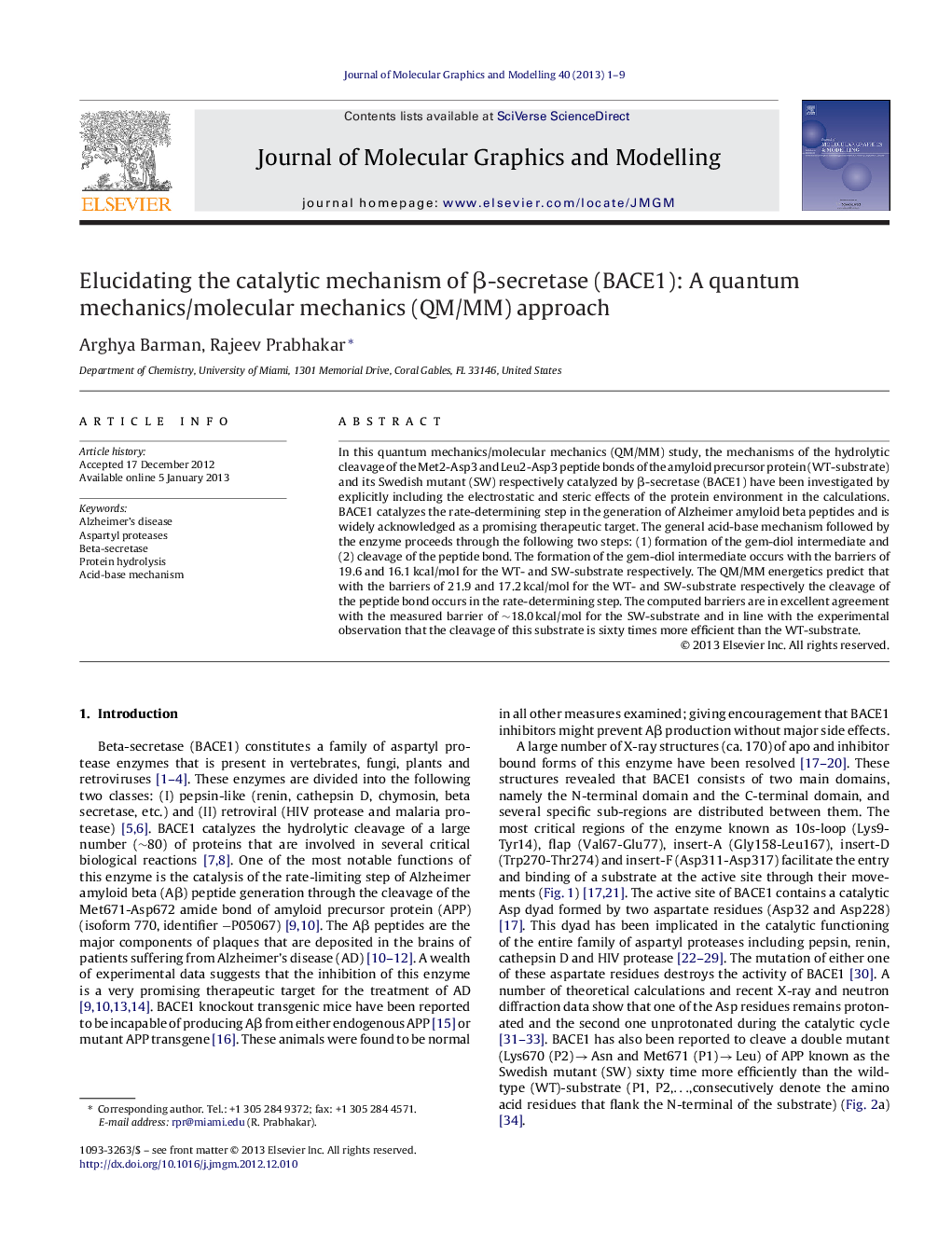| Article ID | Journal | Published Year | Pages | File Type |
|---|---|---|---|---|
| 443394 | Journal of Molecular Graphics and Modelling | 2013 | 9 Pages |
In this quantum mechanics/molecular mechanics (QM/MM) study, the mechanisms of the hydrolytic cleavage of the Met2-Asp3 and Leu2-Asp3 peptide bonds of the amyloid precursor protein (WT-substrate) and its Swedish mutant (SW) respectively catalyzed by β-secretase (BACE1) have been investigated by explicitly including the electrostatic and steric effects of the protein environment in the calculations. BACE1 catalyzes the rate-determining step in the generation of Alzheimer amyloid beta peptides and is widely acknowledged as a promising therapeutic target. The general acid-base mechanism followed by the enzyme proceeds through the following two steps: (1) formation of the gem-diol intermediate and (2) cleavage of the peptide bond. The formation of the gem-diol intermediate occurs with the barriers of 19.6 and 16.1 kcal/mol for the WT- and SW-substrate respectively. The QM/MM energetics predict that with the barriers of 21.9 and 17.2 kcal/mol for the WT- and SW-substrate respectively the cleavage of the peptide bond occurs in the rate-determining step. The computed barriers are in excellent agreement with the measured barrier of ∼18.0 kcal/mol for the SW-substrate and in line with the experimental observation that the cleavage of this substrate is sixty times more efficient than the WT-substrate.
Graphical abstractFigure optionsDownload full-size imageDownload high-quality image (304 K)Download as PowerPoint slideHighlights► Elucidating the catalytic mechanism of beta-secretase for two different substrates. ► Inclusion of the electrostatic and steric effects of the protein environment. ► The cleavage of the peptide bond occurs in the rate-determining step. ► Enzyme cleaves the SW substrate with higher efficiency than the WT substrate. ► The computed results are in excellent agreement with experimental observations.
